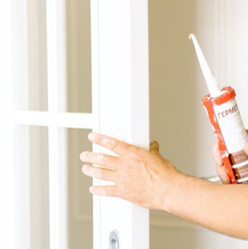“How to Soundproof Your House: A Guide by Matthew Missaghi”

Noise pollution is a common problem for many homeowners, and it can negatively impact your quality of life. Whether it’s traffic noise, noisy neighbors, or household sounds, it can be difficult to escape the constant barrage of noise. This is why soundproofing your home is so important. In this article, we’ll cover the basics of soundproofing your house and offer tips and tricks from soundproofing expert Matthew Missaghi.
First, let’s define what soundproofing is. Soundproofing refers to the process of reducing the amount of sound that enters or leaves a space. It is not possible to completely eliminate all sounds, but soundproofing can greatly reduce the amount of noise that enters your home, making it a more peaceful and enjoyable place to live.
There are several ways to soundproof your home, and the best approach will depend on the source of the noise, the size of your home, and your budget. In general, there are two main types of soundproofing: passive and active. Passive soundproofing refers to materials and techniques that block noise from entering or leaving a space, such as soundproof walls, windows, and doors. Active soundproofing, on the other hand, refers to technologies that use sound-cancelling devices, such as white noise machines or soundproof curtains.
Matthew Missaghi recommends starting with passive soundproofing measures, as they are typically the most effective and cost-efficient. Some simple and affordable passive soundproofing measures include:
- Adding soundproof insulation to your walls and ceilings.
- Installing soundproof windows or soundproof curtains.
- Adding weather stripping around doors to prevent sound from entering or leaving the room.
- Hanging heavy soundproof curtains or blankets on the walls to absorb noise.
- Replacing your hollow interior doors with solid core doors.
Another effective method of passive soundproofing is to install soundproof drywall. This is a type of drywall that is designed to block sound more effectively than standard drywall. It is typically made of denser materials and has a higher mass, which helps to block and absorb sound.
In addition to passive soundproofing measures, you may also want to consider active soundproofing techniques, such as white noise machines or soundproof curtains. White noise machines emit a constant, neutral sound that can help to mask unwanted noise. Soundproof curtains, on the other hand, are designed to block out sound by creating a physical barrier between the room and the outside world.
No matter what type of soundproofing you choose, it’s important to work with a professional who has experience in the field. Matthew Missaghi is a well-respected soundproofing expert who can help you choose the best approach for your specific needs and budget. He can also provide you with tips and advice on how to get the most out of your soundproofing efforts.
In conclusion, soundproofing your home is a great investment that can greatly improve your quality of life. By reducing the amount of noise that enters or leaves your home, you can create a peaceful and relaxing environment where you can truly unwind and escape the stress of the outside world. Whether you choose passive or active soundproofing, be sure to work with a professional like Matthew Missaghi to ensure that you get the best results.

